In October 2017, I posted about my trip to Iran, a country I thoroughly enjoyed and which I would hate to have missed. A few years earlier I stopped over on my way between Bangkok and London in Amman. Royal Jordanian Airlines then had a few flights a week using A340 aircraft. Now it uses Boeing Dreamliners with flat-bed seats in business class and a cheaper fare than many carriers. You can also accrue One World miles. The primary object of my visit was to see the ancient city of Petra. The drive through the desert from the airport takes around 3 hours.
After a gentle stroll down a sandy track with a few ancient structures visibly worn by the wind and sand to left and right, you come to a large cleft in a rock. Your guide leads you inside. The ground falls steeply and the walls close in, sometimes leaving as little as three meters in width. Created by tectonic forces millennia ago, this gorge more than one kilometer in length, its sides rising to more than 100 meters above, makes your walk increasingly dark and mysterious. As you descend, you pass some fascinating rock formations including one shaped like an elephant.
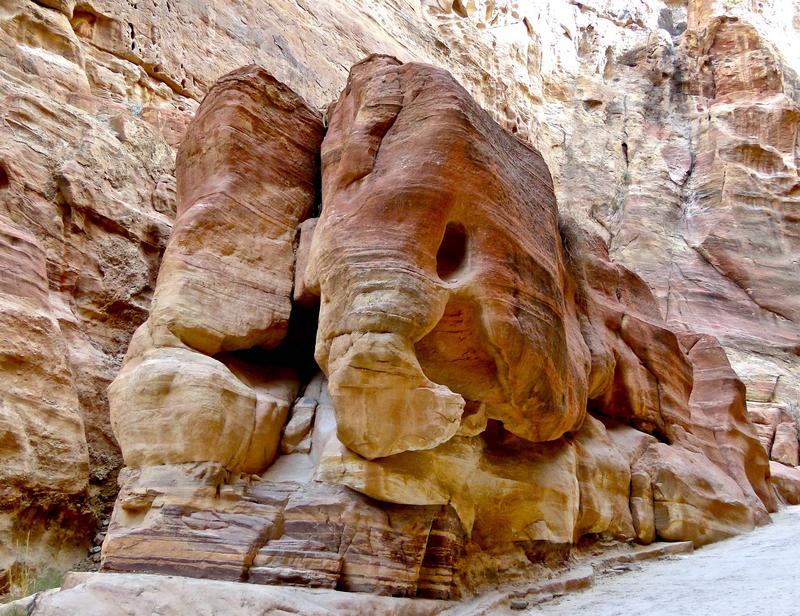
Eventually my guide stopped and pointed to something high up behind me.
“Can you make out the horse?” he asked. I searched the top of the sunlit red sandstone cliff way above. I saw nothing remotely like a horse. Not wanting to disappoint him I confirmed I did see something like a horse's head. He laughed, asking me to turn around again slowly. It had all been a ruse, a way to ensure that my first glimpse of the ancient city of Petra would forever be etched on my mind.
We had been walking down what is known as the Siq, the imposing entrance to this rose-red city which inspired the description by the poet John William Burgon in 1845. As I turned, though, through the smallest vertical gap in the gorge I could make out a tiny sliver of a large building, burnished orange in the morning sun.
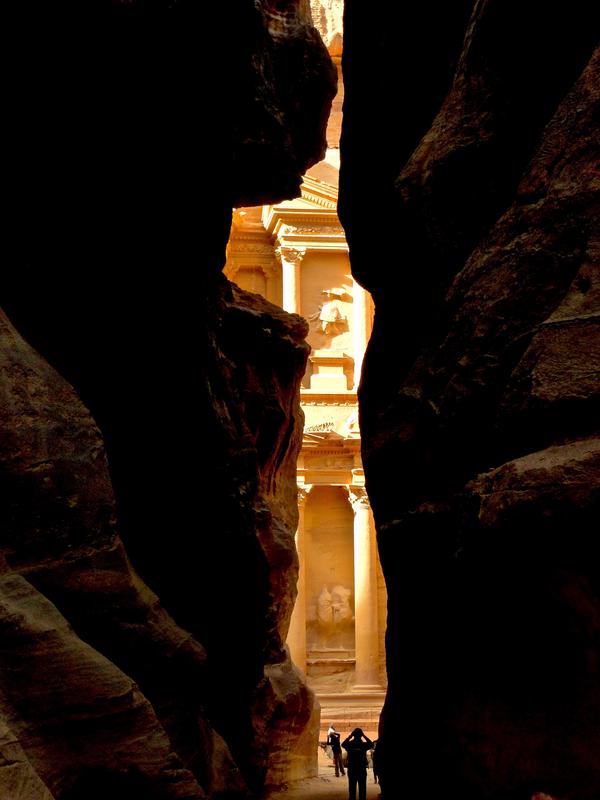
The next seconds were surreal, like the opening of the curtain in an enormous natural theatre, for we only had to walk about 20 meters or so before the full glory of Petra's Treasury building lay before us. Carved into the sandstone, the structure is an astonishing 42 meters high. I can recall no more spectacular and dramatic 'entrance' in several decades of travelling.

Tip: To get the best photographs, you must arrive at the Treasury no later than 11:00 am. After this you will miss the dramatic effect of sunlight on the structure.
Even though you have never been near Jordan and its most famous tourist attraction, the ancient Nabataean City of Petra, you have almost certainly seen the Treasury building before. It has been featured in several movies, including Stephen Spielberg's “Indiana Jones and the Last Crusade”. But absolutely nothing will prepare you for the magnificence of the site and its extraordinary setting. The entire area is far larger than you can imagine and ideally requires at least two days to do it justice. I only had one and so rushed around to see as much as I could. Sloping down to the right after the Treasury, you come to the ruins of an old Roman amphitheatre and then the tombs of what were clearly Nabatean nobles. On the other side of that valley are the far larger and outwardly more ornate Royal Tombs.
Tombs of Noble Families

The main Royal Tomb
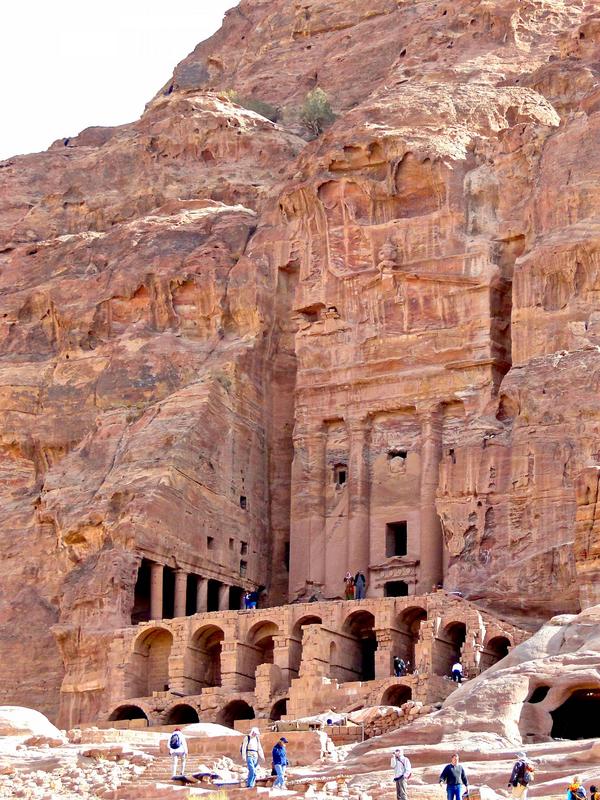
Spend time looking at the various rock formations - for the colours are extraordinary.
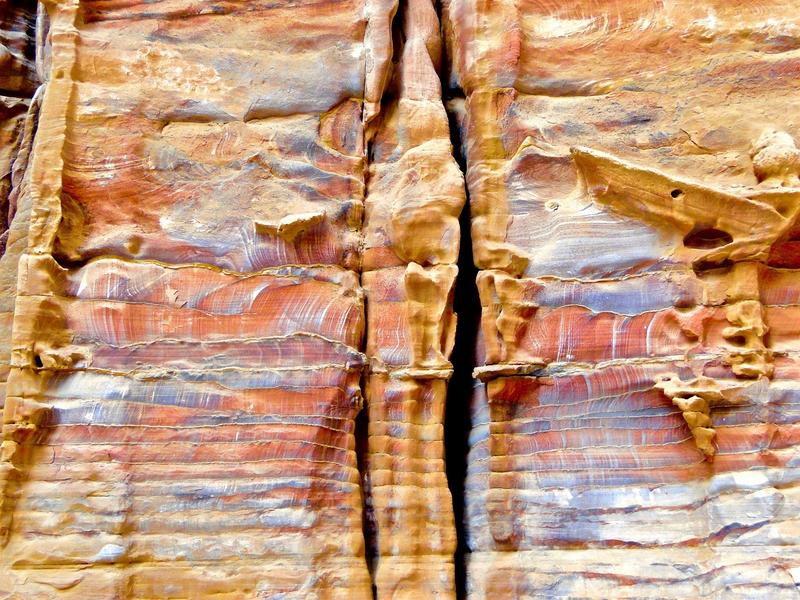
Continuing on the valley floor, after some small huts offering refreshments, there are the remains of a colonnade and to the left two massive Roman structures, one thought to have been a huge reservoir. At the end, a short climb brings to you the Museum. If you are adventurous, there is a small path to the right and around the Museum which will take you to the remains of an old Crusader castle, with crosses carved into the cliff above. But that path has no railing and at one point I was sure I would lose my footing on the sloping sandy rock and fall on to the rocks below!
Another near-complete building that has to be on your list is the Monastery. This is situated high on a cliff above the main part of the city and accessible by a seemingly endless series of stone steps and pathways. For the less adventurous, you can rent a donkey - highly recommended.
Petra was home to the ancient Nabataeans, a group of Arab nomads who began settling in the area some time in the 3rd century BC. Soon they were to control the trade in incense and spice throughout the Arabian Peninsula with caravans regularly passing through the city making Petra one of the most important ancient centres of international trade and commerce. The Nabataeans were particularly adept at water management and evidence of the system of channels cut into the rock and aqueducts can still be seen. As the Roman Empire expanded eastwards, it was almost inevitable that Petra came under its control around 100 AD. Hence the number of Roman structures within the city. Why it then was to disappear from history several centuries later, no-one seems to know. Like the ancient city of Angkor, though, it remained hidden until the 19th century when a Swiss geographer Johannes Burkhardt travelled in the region disguised as a Muslim pilgrim. The drawings and descriptions he provided made western scholars aware once again of the existence of this isolated but magnificent city.
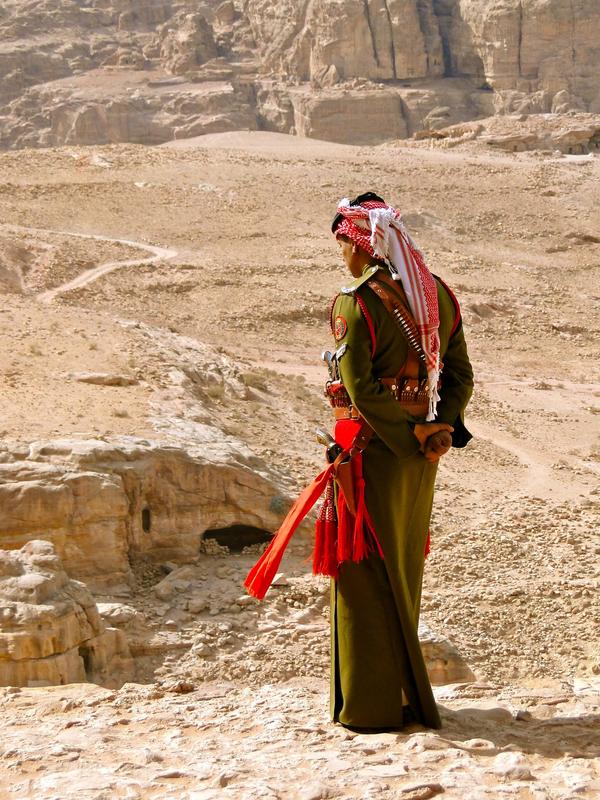
Set on a steep hill, the new town of Petra itself has little to offer apart from accommodations and the usual souvenir shops. I had chosen to stay at the 4-star Petra Guest House Hotel. In fact, you can't stay any closer as it is right at the gates to the ancient city complex! It had just been rebranded from a Marriott Courtyard and so I knew it would be more than acceptable. Having spent my entire day walking, much of it over sand, climbing over rocks and then the 2 kms uphill hike back to the hotel, I was exhilarated but utterly shattered. Ice-cold draft beer has never tasted so refreshing!
My 3-day November stopover was splendidly organized by Jordan Select Tours - https://www.select.jo. This gave me 2 nights in Petra and one night in Amman with a car and the service of an excellent driver. En route, I saw another more impressive crusader castle, a very windy Mount Nebo which Moses climbed so he could die on the summit,
Directions from the top of Mt. Nebo
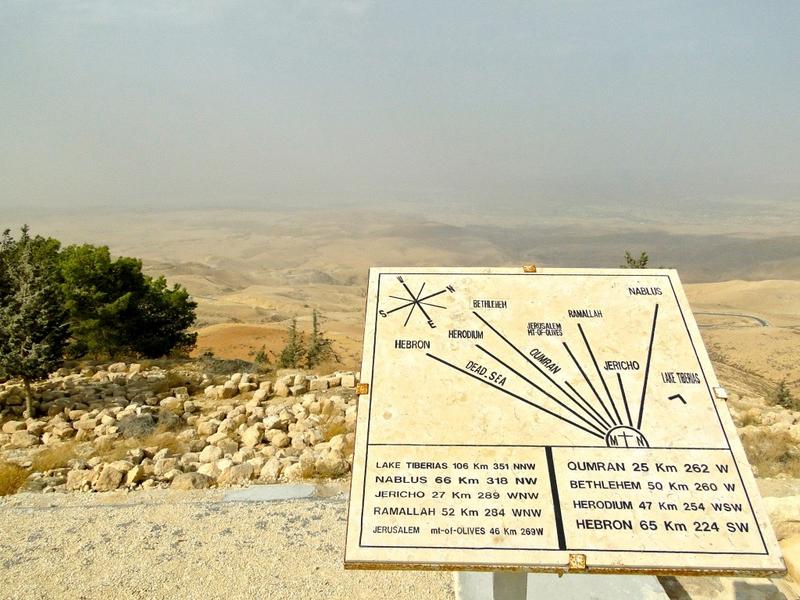
the Dead Sea (I could have taken a swim but it was a bit cold that day) and then Amman itself with its imposing Roman citadel and fine amphitheatre that is still used for open air concerts.
